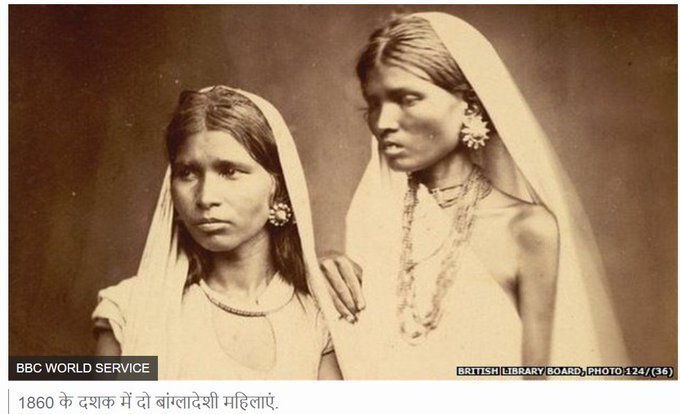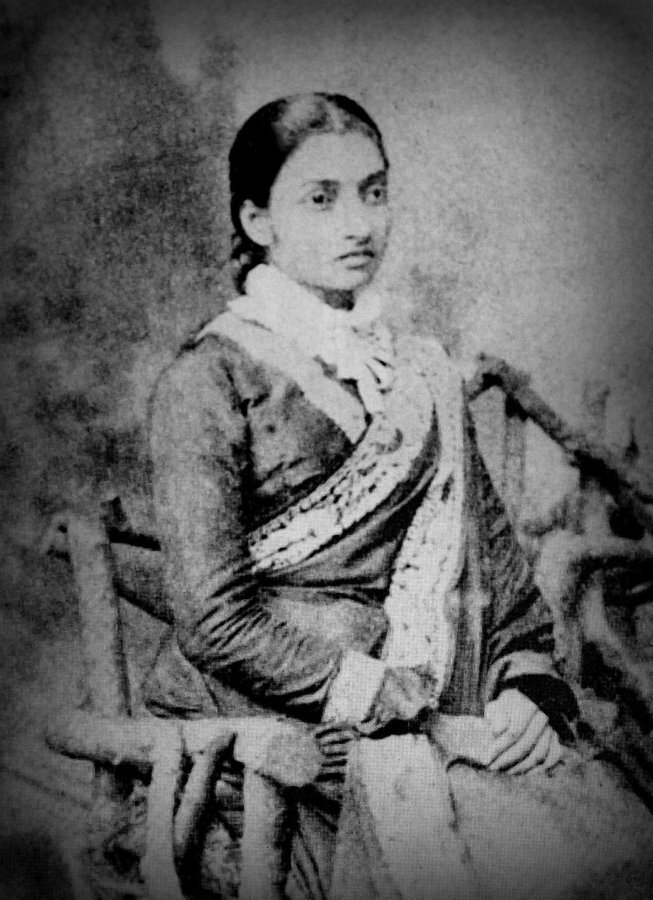When a Woman From Calcutta Challenged a British Norm & Created the Modern Sari Blouse
Ancient Indian women commonly wore saris without an upper undergarment. But during the British Raj, a woman named Jnanadanandini Debi introduced the sari blouse to fellow women.

From sweetheart neckline and boat neck to the deep V and halter neck — the tailor at the curb is never at a loss for suggesting different sari blouse patterns. As his unending list goes on, each style fancier than the previous, he is intent on offering a pattern that will “make heads turn”.
Today, having one’s sari blouse stitched is an entire process of selecting the pattern, having the measurements taken, adding embellishments or threadwork, and then choosing the final look. But only a few decades ago, this ritual did not exist.
In ancient India, it wasn’t uncommon to see women comfortable with having the upper part of their torso bare — sometimes as a way of combating rising temperatures. As a testament to this, there are sculptures in temples and forts across the country that reflect the dressing style in that bygone era, and a sari blouse is nowhere in sight.
As the tailor continues to produce different names and patterns as I watch, I’m intrigued by how a piece of clothing that never existed, so to speak, now has an entire dedicated chapter in the book of Indian fashion.
Turns out, we have Jnanadanandini Debi from the Tagore family to thank for this. An advocate of women’s rights and a believer in liberalism, Jnanadanandini Debi has gone down in history as the woman who made the modern-day sari popular.
But first, let’s discover the incidents that led up to this.
Ancient India did not wear a sari blouse

Tracing back to the Gupta and Maurya periods around 300 BC, women wore pieces of clothing on the lower and upper parts of their bodies. These were very similar to the coverings that were worn by men. Moreover, the concept of fashion had not taken root, let alone the concept of the sari.
It was during the 15th century that the Moghuls were in power and fashion was an integral part of daily life. The trends that emerged at the time set precedence for the traditional attire of today.
The women’s divided garments resembled the salwar kameez (trousers and tunic) while their blouses with long skirts were similar to the lehenga (ankle-length skirt).
It was only during the Indus Valley Civilisation around 2800 BC to 1800 BC that the first instances of the modern-day sari are reported. The attire of women comprised a three-piece garment or Poshak. It had a lower garment – Uttariya – which covered the part from the waist down; a chest band – Stanapatta; and a piece of fabric that went over the shoulder and covered the head – Antriya.
While popular, saris weren’t a norm and in hot climes, women would choose to ditch the chest band. As history tells us, it is only the British rule — and other western influences during the time — that led to the sari blouse becoming a part of mainstream fashion and Indian dressing as we know it today.
This is where Jnanadanandini Debi, comes in.
Who is Jnanadanandini Debi?

Born into a middle-class family, Jnanadanandini Debi was married at the age of seven into the prestigious Tagore family. She became the wife of Satyendranath Tagore, the brother of the famous Bengali poet Rabindranath Tagore.
Marrying into the Tagore family meant abiding by the stringent rules that women in Bengal then had to follow.
She wasn’t allowed to step out of the home much, lived confined to the room under the purdah system, and saw to the duties of the household.
In Women of the Tagore Household, Calcutta University’s late Dr Chitra Deb explained that no man, neither family member nor servant, was allowed into the inner rooms at will. Unmarried men were not allowed at all.
She writes, “It was only after marriage when a separate bedroom was allotted to him that a man came in at night to sleep.”
The system also extended to the dressing style that women had to follow.
As Dr Sonia Nishat Amin of the University of Dhaka writes in The World of Muslim Women in Colonial Bengal, Bengali attire known as the zenanas were closely linked to the culture.
“Behind the walls of the traditional Hindu andarmahal (palace interiors) of the well-to-do was a light sari worn without undergarments, which gave a semi-transparent look,” she writes.
Though Satyendranath was supportive of his wife and advocated for women’s rights, familial rules made it impossible for Jnanadanandini to get her freedom. But she persisted.
It is said that there were so many clashes in the home between her and her father-in-law Debendranath Tagore that Jnanadanandini moved into a separate house with her husband and children, thus setting the precedent for nuclear families in Calcutta.
Through these incidents, Jnanadanandini began to step out of the house more often and would encourage the women of Bengal to do so and lead a social life.
This sense of freedom was only elevated when Satyendranath was appointed as the assistant collector of Bombay, meaning that Jnanadanandini Debi was now associating with high circles. She would travel to Bombay and broaden her ways of thinking. It was during this time that an incident shaped the future of the sari blouse.
The idea of the sari blouse is born
During one of her social events, Jnanadanandini was trying to get entry into a club under the Raj (British rule) but was refused entry.
The reason was her attire — the Bengali zenana, which had the sari fabric lying over her bare breasts. Being denied entry because of her attire provoked Jnanadanandini, who then came up with a way of covering the upper torso, and draping the sari elegantly.
In her 2015 book Indian Fashion: Tradition, Innovation, Style, former TVOF columnist Arti Sandhu writes, “She adopted the Gujarati style of tying the sari by bringing the pallu around her body and throwing it over her left shoulder.”
From then on, the style trended and was soon used not only as traditional attire but also to make a fashion statement.
The story goes that once she returned to Calcutta, she invited women to learn this new way of draping the sari and hundreds of women turned up at her doorstep.
The style soon went on to be called the Brahmika sari, and gradually the trend transformed into chemise, jackets, and blouses.
While I discovered the tale of how the sari blouse travelled through time to become an integral piece of fashion, the tailor has progressed from suggesting trendy patterns to the timeless ones from the 80s.
Which pattern he will finally deem to be a head-turner is a story for another day. If you found our stories insightful, informative, or even just enjoyable, we invite you to consider making a voluntary payment to support the work we do at The Better India. Your contribution helps us continue producing quality content that educates, inspires, and drives positive change. Choose one of the payment options below for your contribution- By paying for the stories you value, you directly contribute to sustaining our efforts focused on making a difference in the world. Together, let’s ensure that impactful stories continue to be told and shared, enriching lives and communities alike. Thank you for your support. Here are some frequently asked questions you might find helpful to know why you are contributing?

(Edited by Pranita Bhat)
Sources
Dressing the Indian woman through history by BBC, Published on 6 December 2014.
The Colonial History Of India’s Favourite Sari Blouse by Payal Mohta, Published on 3 September 2021.
History of the sari, from ancient India to fashion runways – simple, versatile garments tell the stories of women who wear them by Bhakti Mathur, Published on 16 October 2020.
Jnanadanandini Devi’s New-Age Sari Drapes by Cynthia Green, Published on 25 May 2020.
Jnanadanandini Devi Tagore is an unsung heroine who led a social revolution in Bengal during the 19th century by Ninad Dange, Published on August 2018.
This story made me
-
97
-
121
-
89
-
167













